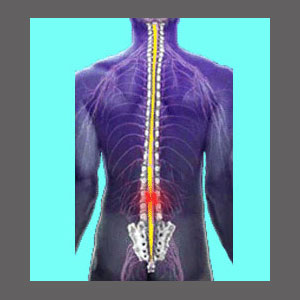
Many patients are looking for a simple spinal stenosis explanation so that they can better understand what is going on inside their back or neck. Central spinal stenosis is also known simply as spinal stenosis or central spinal canal stenosis. This condition describes a narrowing of the central canal which runs through the vertebral foramen in the spinal column. Central stenosis should not be confused with neuroforaminal stenosis, which describes a scenario in which one or more of the neuroforaminal spaces are decreased in size. Central canal stenosis is most prevalent in the elderly, but can strike anyone due to congenital irregularities, developmental disorders and traumatic spinal injury, as well as simple advanced degeneration.
This treatise defines spinal stenosis and offers a comprehensive overview of the condition from an objective and factual perspective.
Anatomical Spinal Stenosis Explanation
The central spinal canal runs through the spine behind the vertebral bodies, in front of the lamina and flanked by the pedicles. This hollow space is filled with various crucial tissues including the thecal sac, the spinal nerves, and of course, the spinal cord. In a central stenosis condition, the spinal canal is decreased in size due to specific factors, leading to less space for these sensitive nerve tissues to function properly. Central canal stenosis can take a toll on the nerve roots, or the spinal cord, potentially enacting dire symptoms in some patients.
When you hear the word stenosis, think of squeezing a straw with your fingers while trying to drink. The pinched section constricts the fluid, much in the same way that spinal stenosis can constrict nerve tissues inside the spinal canal.
Spinal Stenosis Diagnosis Explained
A diagnosis of spinal stenosis should not surprise anyone over the age of 50. It is normal and expected for the typical age-related changes in the spine to enact stenosis in the cervical and lumbar regions after middle age. Typically, these types of canal narrowing issues are not problematic and do not produce any type of spinal stenosis symptoms. In some severe cases, even normal degeneration can cause pain when the structural issues become concentrated in a specific area of the spinal canal. Likewise, most congenitally narrowed spinal canals will not produce pain, but can be more susceptible to further narrowing from compounded sources of stenosis, such as herniated discs or osteophyte build-up.
Patients who are diagnosed with spinal stenosis must learn the facts about the condition in order to better their opportunities for successful treatment and minimize their chances of suffering from the all too common misdiagnosis which is so common in the dorsalgia sector.
Spinal Stenosis Explanation and Advice
Remember that stenosis is a very misunderstood condition indeed. In many cases, stenosis exists, but no pain or neurological impairment is experienced. This is because the spinal canal is still patent enough to prevent any neurological compression from taking place. In order for stenosis to elicit pain and related nerve effects, compression of the nerve roots or spinal cord must take place. Typically, impingement, effacing touching, mass effect or displacement of a nerve root or the spinal cord will not indicate an inherently symptomatic event.
Patients are advised to discuss their diagnoses with their physicians and also to learn all they can about their condition. This is the best way to full understand exactly what type and degree of stenosis you might have.
Spinal Stenosis > What is Spinal Stenosis? > Spinal Stenosis Explanation





